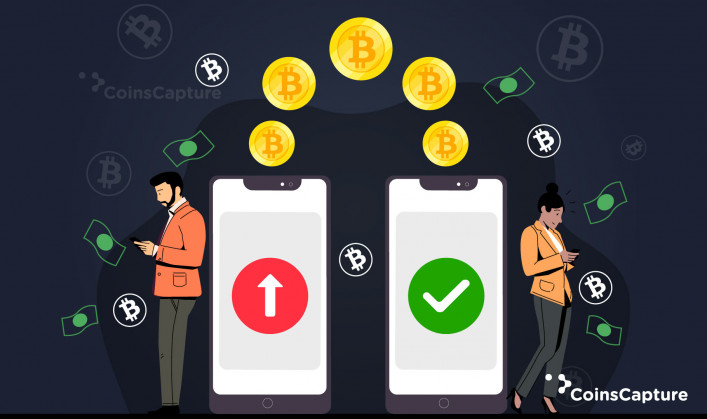7 November 2025
5 Easy Ways to Lower Bitcoin Transaction Fees
It is not surprising to see that you end up paying a 5 USD fee for a 1 USD Bitcoin Transaction and then consider Cryptocurrencies as a costly affair. Digital Assets are created to lower transaction fees by maximizing efficiency, but sometimes transaction fees remain more expensive than other conventional payment processors. This is mainly due to the Bullish Market, where more and more users rush to use digital Currency, resulting in network congestion.
The Blockchain network has limited space. Similar to highways, the transactions move more very slowly when the lanes are filled. The number of transactions to be approved has also surged significantly over the last couple of months. Therefore, users have to pay the miners a higher fee to get their transactions approved faster. This happens because miners have a stronger desire to include more lucrative transactions in the blocks they mine. Sudden blockchain rate fluctuations and major world events can also increase the fee.
Higher Transaction Fees can also be applied when your crypto account has a history of micro-deposits (referral bonuses). If your account consists of large amounts of small deposits, the size of your Transaction will be bigger due to several inputs resulting in high fees. In simpler words, the bigger the transaction size, the higher is the blockchain fee.
However, Fees play an essential part in the Bitcoin ecosystem. It supports miners with an extra incentive. As mining rewards get halved every four years, transaction fees will also play an increasingly prominent role in safeguarding the Bitcoin network. Transaction fees keep the network censorship-resistant, eliminate political, geographical, and other types of criteria that may foster discrimination between transactions. Until a fee is collected, miners will not undergo a selection or arbitrary prioritization of which Transaction gets added to the next block and which gets stalled.
Also read: How to track bitcoin transactions?
But that doesn't mean that you should pay a lot each time, or you must always bid the amount required for your Transaction to be included in the next block. Here's a guide to help lower transaction costs even in times of the circumstances mentioned earlier.
1. Lightning Network: Rising Transaction fees is one of the major concerns of developers, so they have been working on the Lightning Network- a network specially designed on top of Bitcoin that will enable easy processing of further transactions by relieving congestion. If a typical on-chain bitcoin transaction fee could be $25, then an average fee on Lightning would be a fraction of the cent. For users planning to make several purchases in the future, this is the perfect long-term option. Examples of Lightning-specific wallets are Phoenix, Breez and BlueWallet.
2. SegWit Transaction: SegWit transactions is a change adopted by the Bitcoin community back in 2017, which can charge up to 30% less than legacy transactions. For example, if a legacy transaction costs $15, a SegWit transaction might cost roughly $10.50, in a best-case scenario. Along with SegWit, bech32 addresses can decrease fees a little more as well. Examples of SegWit wallets include Ledger Nano S, Trezor, Exodus, and Electrum.
3. Wait for the right time: If you have time on your side, then choose a moment when the Blockchain network is less congested. For instance, on weekends, as businesses are closed so lesser sales are made. This gives extra time for transactions to be cleared.
Alternatively, you can try sending your Transaction with a smaller fee, then wait until it clears. For this strategy to function, you need to choose a wallet that allows users to customize transaction fees. Most of them do, but some don't, so just make sure that the wallet you're using allows setting custom fees. Also, remember this strategy can be a bit risky. If your fee is too low, the Transaction could get stuck temporarily or fail to complete it entirely.
Also read: 7 Reasons Behind Bitcoin Transaction Delays
To eliminate such scenarios, visit mempool.space to get an idea of current bitcoin transaction fees. This site provides fee suggestions for low-, medium- or high-priority transactions. Naturally, the higher-priority fees will push the transactions through faster. But if you aren't in a rush, you should opt for a cheaper fee and wait for it to be processed. Additionally, under the "purging" header, mempool.space shows at what fee price the Bitcoin network will ignore the Transaction.
4. Batching of Transactions: This strategy refers to combining multiple transactions into one Transaction and then submitting it in the limited space available on Bitcoin's blockchain. Batch transactions are both cost- and space-efficient. In addition, it allows you to reduce your per-transaction fee by aggregating multiple transactions into one. This practice is very common among merchants who have several Bitcoin transactions in a day or week.
5. Point of Sale Provider: As a merchant, your point of sale (POS) platform will enable you to accept payment from your customers. But some Bitcoin POS providers charge their processing fees along with market transaction fees. This can be completely eliminated if you select a POS provider that charges only a transactional fee depending on the percentage of your sales. It shields you from fluctuating Bitcoin transaction fees and helps you to plan a better budget for what you payout. It also makes Bitcoin payments much more affordable.
The Bottomline:
In the era of the Digital Economy, Currency is becoming increasingly mobile. Checks have turned obsolete, Fiat is less common, and Plastic is more susceptible to fraud. The best solution is Bitcoin, both transparent and convenient. But to accept this payment method, you need to understand the concept of Transaction fees and how it has a significant impact on your overall capital gains or losses. Also, it's not always possible to avoid these fees; there are several easy steps that you can take to mitigate the costs and avoid overpaying.
Disclaimer: The author’s views and opinions are for informational purposes only and do not constitute financial, investment, or other advice.






